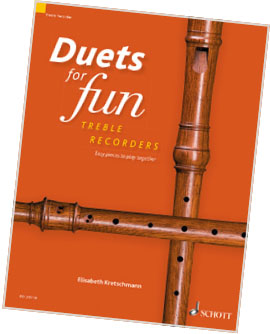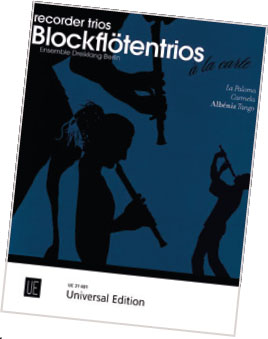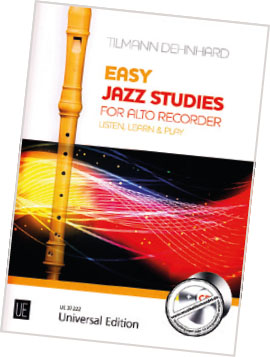
Duets for Fun: Descant Recorders
The introduction to this book is both informative and engaging, taking you through how the book is compiled and the tag line – easy pieces to play together – is accurate but sells itself short. The first section of the book contains short and accessible duets, which an inexperienced or young player could access without too much difficulty, but as you progress through the book, it not only develops in terms of technical difficulty, but musical language. An intermediate player should not be put off purchasing this book by the title. As a teaching aid, this collection gives the teacher multiple opportunities to introduce new techniques and theory elements. Era-specific notations are given by the editor, but the more advanced player could easily embellish upon these to create their own interpretation.
The contents pages are very well laid out, specifically delineating which pieces belong to which genre. For the inexperienced player, this is extremely welcome, and an addition that the treble recorder edition could benefit from. There is a gap from 1800 onwards, and this would be nice to address, especially if players wanted a chronological concert list.
Duets for Fun: Treble Recorders

The tagline – same as the previous book – is at odds with the music of the book and the written introduction, which specifically mentions advanced players. This book is certainly not aimed at beginner players – more the intermediate/advanced player. In terms of range of repertoire, in order to make the book more balanced in terms of repertoire, it would be good to have more diversity of composers from 1800 onwards. Having said this, the book contains some lovely repertoire, and the two new pieces written specifically for the collection are fantastic additions. The music is in parts technically demanding whilst encouraging players to really work together to create light and shade, and to play as an ensemble.
The review copy didn't come with separate parts, so both members of the duo would have to purchase their own copy to enable practice. The music itself is well laid out, and care has been taken to remove unnecessary page turns. Each part is of equal interest and difficulty so no need to keep swapping! A good addition to the collection.
Recorder Trios: Blockflötentrios à la carte

These are scored for descant, treble and bass – a lovely rich combination. The edition comes with the score and the individual parts.
In terms of difficulty, they are easily accessible for the intermediate player onwards. As in most trios, the bass contains a mostly ostinato line, however care has been taken to ensure that the line is altered so that they have their own moments to shine. The descant and treble parts are of equal difficulty and when not playing chordally, they are passing the melody back and forward to each other, or playing in cannon.
The preface gives a little information about the pieces (particularly ‘La Paloma’ by Sebastián de Yradier), and it would be nice to see this expanded a bit to include the musical highlights of each piece – particularly for ‘Carmela’, which has been given one line to say that it is a Latin American folk song and no explanation of what characterises it as such.
A wonderful collection of trios which could either be played together in concert or as individual pieces.
Easy Jazz Studies for Alto Recorder

There are many things to like about this book – chiefly that a book has been written specifically for recorder players that introduces them to jazz, which is an often overlooked area. The foreword is clearly written and gives specific instructions on how to use the book and play certain aspects.
The way the CD has been constructed is very well thought out and provides multiple tracks which increase the tempo slowly so that you can learn to play it in stages. The one limitation to flag up is that you only have the jazz chords notated about the recorder part. If you are intending to only play it with the CD or have an accompanist who can read chords this is fine, but it is a little limiting. Although it would be much better to play it live with musicians who could improvise an accompaniment, this is not always possible. Music needs to breathe, and playing solely with a CD does not give you this option
On the back cover it says that the approximate grading is 1 – 8. This is misleading, as they seem to be aimed at an intermediate player and would overwhelm a student just starting out.








